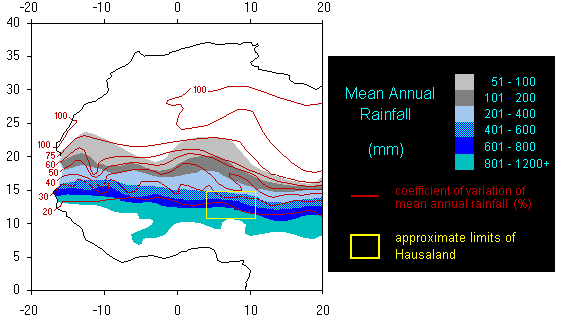

Virtually all Hausa households attempted to cultivate at least a portion of their food requirement; exactly how much varied from year to year, and depended on the household demands for cash and liquidity. Groundnuts could be incorporated into intercropping patterns, and appeared not to increase the demand for land (suggesting that labor was the limiting factor). Further, groundnuts are a leguminous plant, and increase soil fertility by fixing nitrogen. Cotton, however, was not so fully integratable into traditional cropping systems. But even in the case of groundnuts, data exist that point to reductions in food-crop production (but not total production) when these are intermixed. The effect may be due to several synergistic factors, among which may be (1) interspecies competition for nutrients and moisture, exacerbated perhaps by (2) a discontinuous plant canopy that permits greater evaporation from the soil's surface, as well as (3) competition for household labor, since groundnuts necessarily require additional labor for planting, hoeing, and harvesting. While groundnuts contain vegetable protein, fatty acids, minerals, and vitamins, they cannot be consumed as a staple, since they provide insufficient nutrition and caloric intake over extended periods (Watts, 1983). Cotton is an even worse prospect from a food security standpoint. First, it never was grown in polyculture, which the British feared would leave the crop open to insect depredation. Second, the labor demands of cotton production apparently conflicted with food crop demands during crucial labor bottleneck periods. The net effect of commoditization, was largely to increase food insecurity, particularly when commoditization was forced on the local populace through the imposition of colonial taxes.
Watts, M., 1983. Silent Violence: Food, Famine and Peasantry in Northern Nigeria. Berkeley: University of California Press, 687 pp.
The Table of Contents of my work on Sahelian food security is available.
 Back to Links
Back to Links  Forward to Environmental Security
Forward to Environmental SecurityThis site last updated July 17 1997.